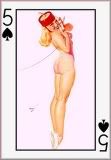Scott Ritter playing the blame game again
via: informationclearinghouse
The coup that wasn't
Scott Ritter, reveals how the CIA plotted to use a UN weapons inspection to overthrow the Iraqi regime - and how fiasco turned to tragedy when it failed
By Scott Ritter
09/28/05 "" --The Guardian -- 'This is big, Scott," Moshe Ponkovsky said. "We don't share this with anyone." Israel's military intelligence was already assisting us at Unscom (the United Nations Special Commission, which ran the UN's weapons inspections programme in Iraq) by scrutinising the "take" from the American U-2 spy-plane flights over Iraq. It had proved an unorthodox but fruitful relationship for Unscom: the Israeli analysts had proved far superior to the CIA's. But what I was now proposing to the Israelis was a dramatic expansion of this intelligence-sharing.
I was asking Lieutenant Colonel Ponkovsky and his colleagues to accept tapes from a secret Unscom-British communications eavesdropping operation that we were planning in Baghdad itself. The Israelis would process the data (ie, break any codes or ciphers the Iraqis might be using, and translate), and analyse them to determine if there was anything useful for Unscom's mandate of disarming Iraq.
It was an ambitious, and possibly dangerous, project, but I had the backing of Unscom's senior executives - its chairman, the Swedish diplomat Rolf Ekéus, his American deputy, state department official Charles Duelfer, and Russian arms control expert Nikita Smidovich. By the end of January 1996, the scheme was falling into place: Ponkovsky told me that his boss, director of military intelligence General Ya'alon, had given authorisation. Just one part of the jigsaw puzzle was missing: with Britain providing the intercept team, and Israel doing the analysis, that just left the Americans.
Earlier that month, Duelfer had handed me a paper from the CIA containing a series of questions about Unscom's communications intercept plan. Until then, the CIA had been disdainful of Unscom as a tool for intelligence-gathering, but now they were getting interested. Not that I knew it at the time, but the hidden agenda was regime change.
Steve Richter, the head of the CIA's Near East Division, had decided that the CIA would extend a helping hand - as long as they could exploit Unscom's work to further its plans for a coup against Saddam Hussein. This newfound enthusiasm for Unscom was only confirmed when the CIA saw how weapons inspectors were increasingly gaining access to some of the most sensitive sites in Iraq, including bases belonging to the Special Republican Guard - Saddam's personal bodyguard.
The CIA coup plan went like this: if Unscom inspections could somehow be used to trigger a crisis, that would create a pretext for a US military attack against the Special Republican Guard, then Saddam's personal security force could be decapitated. This would clear the way for the plotters, led by Mohammad Abdullah al-Shawani, a former commander of Iraqi Special Forces who had defected to Amman in Jordan and been recruited by the CIA, to make their move.
The coup that wasn't
Scott Ritter, reveals how the CIA plotted to use a UN weapons inspection to overthrow the Iraqi regime - and how fiasco turned to tragedy when it failed
By Scott Ritter
09/28/05 "" --The Guardian -- 'This is big, Scott," Moshe Ponkovsky said. "We don't share this with anyone." Israel's military intelligence was already assisting us at Unscom (the United Nations Special Commission, which ran the UN's weapons inspections programme in Iraq) by scrutinising the "take" from the American U-2 spy-plane flights over Iraq. It had proved an unorthodox but fruitful relationship for Unscom: the Israeli analysts had proved far superior to the CIA's. But what I was now proposing to the Israelis was a dramatic expansion of this intelligence-sharing.
I was asking Lieutenant Colonel Ponkovsky and his colleagues to accept tapes from a secret Unscom-British communications eavesdropping operation that we were planning in Baghdad itself. The Israelis would process the data (ie, break any codes or ciphers the Iraqis might be using, and translate), and analyse them to determine if there was anything useful for Unscom's mandate of disarming Iraq.
It was an ambitious, and possibly dangerous, project, but I had the backing of Unscom's senior executives - its chairman, the Swedish diplomat Rolf Ekéus, his American deputy, state department official Charles Duelfer, and Russian arms control expert Nikita Smidovich. By the end of January 1996, the scheme was falling into place: Ponkovsky told me that his boss, director of military intelligence General Ya'alon, had given authorisation. Just one part of the jigsaw puzzle was missing: with Britain providing the intercept team, and Israel doing the analysis, that just left the Americans.
Earlier that month, Duelfer had handed me a paper from the CIA containing a series of questions about Unscom's communications intercept plan. Until then, the CIA had been disdainful of Unscom as a tool for intelligence-gathering, but now they were getting interested. Not that I knew it at the time, but the hidden agenda was regime change.
Steve Richter, the head of the CIA's Near East Division, had decided that the CIA would extend a helping hand - as long as they could exploit Unscom's work to further its plans for a coup against Saddam Hussein. This newfound enthusiasm for Unscom was only confirmed when the CIA saw how weapons inspectors were increasingly gaining access to some of the most sensitive sites in Iraq, including bases belonging to the Special Republican Guard - Saddam's personal bodyguard.
The CIA coup plan went like this: if Unscom inspections could somehow be used to trigger a crisis, that would create a pretext for a US military attack against the Special Republican Guard, then Saddam's personal security force could be decapitated. This would clear the way for the plotters, led by Mohammad Abdullah al-Shawani, a former commander of Iraqi Special Forces who had defected to Amman in Jordan and been recruited by the CIA, to make their move.



